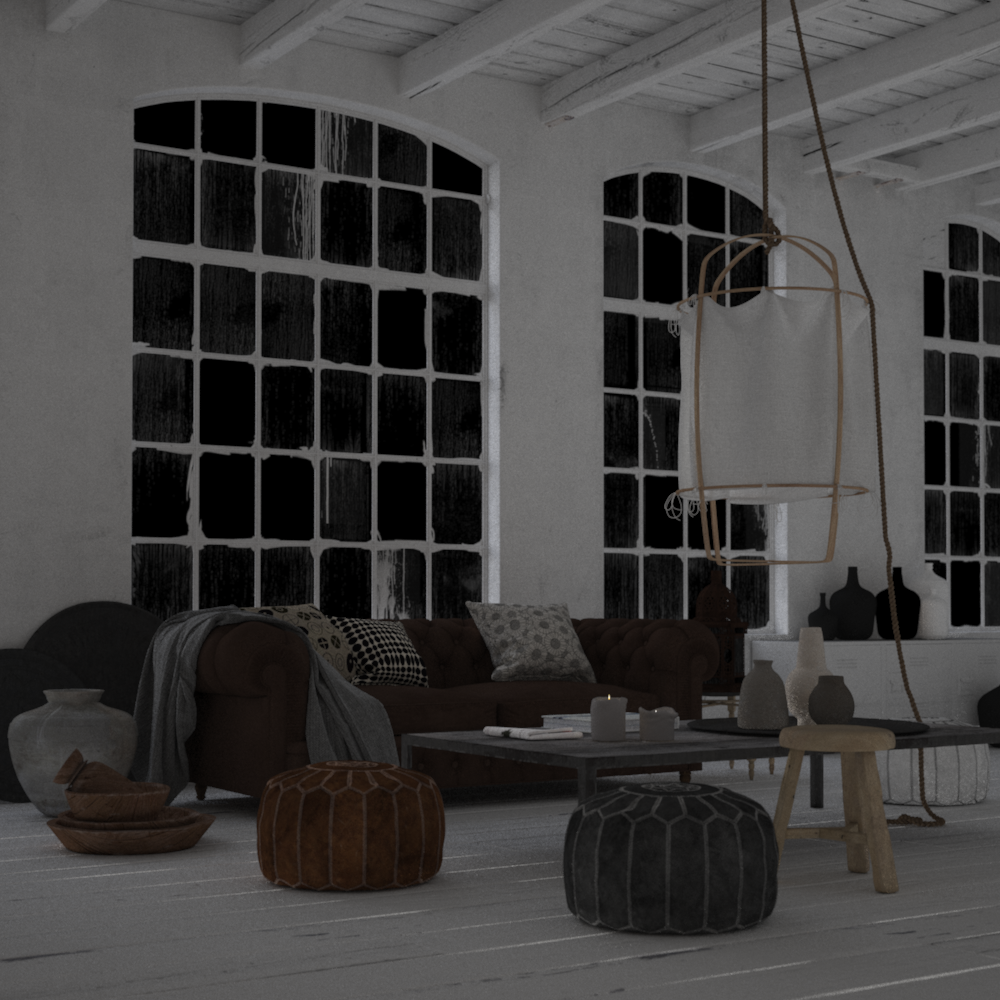This page provides details on the Beauty Render Elements in V-Ray for Unreal.
Overview
The Beauty Render Elements are the primary render elements form the V-Ray's pre-composited final render Beauty (RGB_Color). When rendering a scene, the image that is output is called the Beauty render. This render is comprised of many elements such as diffuse color, shadows, lighting, and reflections that are composited together to form the final Beauty look. All these component elements may be broken out into separate render elements which can be used to control different aspects of the final image during compositing.
Parameters
Enable – Enables the rendering of the channels included in this preset group.
All of the Beauty Render Elements share the same Channel options:
Active – Enables the render of the channel.
Denoise – Enables the render element's denoising, provided the Denoiser render element is present.
Consider for AA – By default, the Image sampler applies AA based on the RGB image. When this option is enabled, the Render Element is considered for AA.
Filtering – When enabled, it applies the antialiasing filter to the render element.
Color Mapping – Applies the default color mapping options to this render element (Reinhard).
Background
The Background Render Element includes just the background as set in the scene, with the rest of the image rendered as black. It stores an image of the texture used in the background behind geometry in a scene as seen from the camera. Geometry that blocks the background image renders as black. Types of manually created backgrounds, such as a plane mapped with a texture set outside a window, is not interpreted to be the "background" for this render element.
Works best when you use VRaySettingsEnvironment BP.
GI
The Global Illumination Render Element is a color image that stores indirect lighting information coming from reflected diffuse light in a scene ( without direct light and reflection contributions) when Indirect Illumination is enabled.
Lighting
The Lighting Render Element stores direct lighting information from lights in the scene, and materials as lit by the lighting. This render element can be used to brighten, lessen, or tint the direct lighting in a composite.
Reflection
The Reflection Render Element stores reflection information calculated from the materials' reflection values in the scene. Surfaces with no reflection values set in their materials will contain no information in the render pass and will therefore render as black.
Refraction
The Refraction Render Element stores refraction information calculated from materials – such as glass or water – that refract objects behind them in the camera's view. This means the brightness, coloration, etc. of the refractions can be adjusted without the need to re-render.
Any material in a scene that has a value set for its Refraction parameter will generate refraction information that can be seen in this render element. A surface with no refraction values set in its material(s) will contain no information in the render element and therefore render black.
Specular
The Specular Render Element is an image that stores specular reflection (basically put, highlight) information calculated from the material's reflection value in the scene. Specular reflection is defined as the reflection of light from a surface in a single particular reflection, as opposed to a diffuse reflection which is reflected at many angles.
The brighter the area, the more highlight reflection the object exhibits in the render. Specular highlights will be colored if the Reflection Color parameter of a material is colored.
Self Illumination
The Self Illumination Render Element stores the illumination of any self-illuminated materials in the scene. It isolates self-illuminated materials, like Emissive VRayPBRMtl or self-illuminated VRayMtl. This render element is useful for brightening or color-correcting self-illuminated materials in the final composite.
Sub Surface Scatter
The Subsurface Scattering Render Element stores subsurface information. This render element can then be used to enhance or color-correct just the subsurface scattering component of the image during the compositing process.
Works only for materials that have "Render materials from .vrscene" option enabled.










